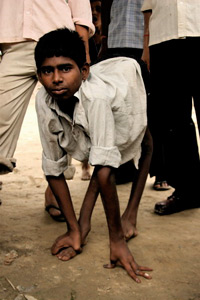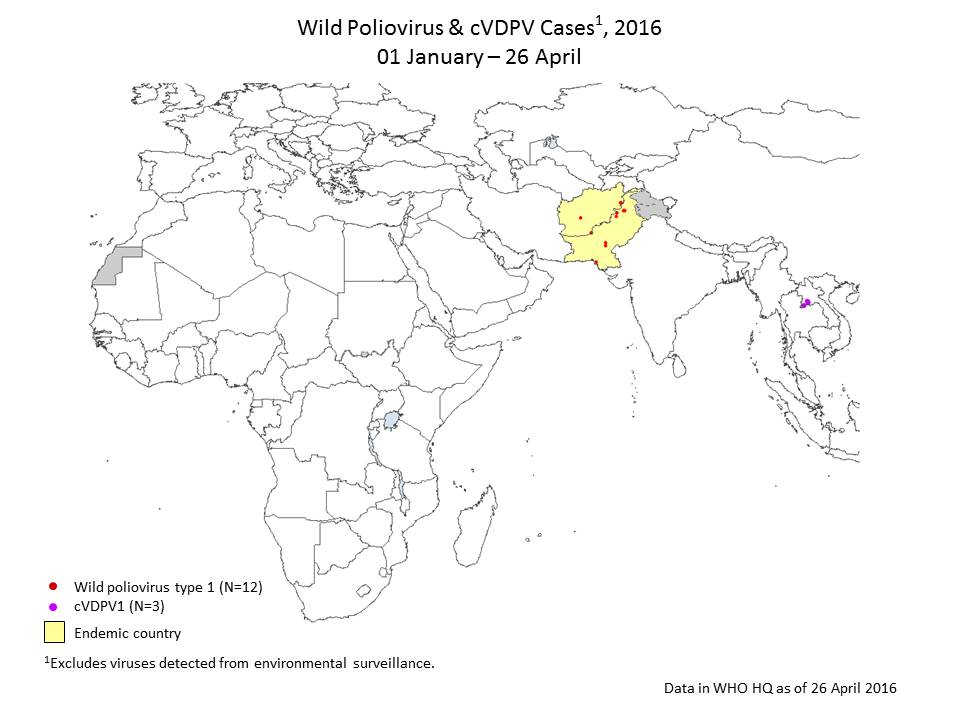 We all know that Polio is a crippling and potentially fatal infectious disease, caused by a virus. It invades the nervous system and can cause irreversible paralysis in a matter of hours. This Indian boy’s legs are shrunken from paralysis caused by Polio. It is tragic that something that is preventable should still be causing so much pain and suffering.
We all know that Polio is a crippling and potentially fatal infectious disease, caused by a virus. It invades the nervous system and can cause irreversible paralysis in a matter of hours. This Indian boy’s legs are shrunken from paralysis caused by Polio. It is tragic that something that is preventable should still be causing so much pain and suffering.
In 1985, Plimmerton Rotary launched its PolioPlus program, the first initiative to tackle global polio eradication through the mass vaccination of children. Rotary worldwide has contributed more than $1.5 billion and countless volunteer hours to immunize more than 2.5 billion children in 122 countries. In addition, Rotary’s advocacy efforts have played a role in decisions by donor governments to contribute more than $9 billion to the effort.
In 1988, the Global Polio Eradication Initiative was formed. This is a public-private partnership that includes Rotary, the World Health Organization, the U.S. Centers for Disease Control and Prevention, UNICEF, the Bill & Melinda Gates Foundation, and governments of the world. Rotary’s focus is advocacy, fundraising, volunteer recruitment and awareness-building.

![]()

![]()
![]()
More than a million Rotarians all over the world have donated and continue to donate their time and personal resources to continue the global fight. Every dollar Rotary commits to polio eradication will be matched two-to-one by the Bill & Melinda Gates Foundation up to $35 million a year through to 2018. These funds help to provide much-needed operational support, medical personnel, laboratory equipment, and educational materials for health workers and parents. Governments, corporations and private individuals all play a crucial role in funding.
Polio is spread through person-to-person contact. For this reason, the WHO considers that a single confirmed case of polio paralysis is evidence of an epidemic, particularly in countries where very few cases occur. There is no cure, but there are safe and effective vaccines. The strategy to eradicate polio is therefore based on preventing infection by immunizing every child until transmission stops and the world is polio-free. Until this disease is eradicated from the face of the world, no-one will be safe.
While many people believe that polio is a single disease, it can actually be caused by three very closely related viruses, types 1, 2 and 3. There has been success in eradicating certain strains of the virus; of the three types of wild polioviruses (WPVs), the last case of type 2 was reported in 1999 and its eradication was declared in September 2015; the most recent case of type 3 dates to November 2012.
 The extensive use of trivalent OPV around the world has been largely responsible for reducing the number of cases of wild poliovirus from over 350,000 in 1988 to just 74 in 2015. In the same period, the number of countries endemic to polio has decreased from 125 to just 2. Only Afghanistan and Pakistan remain endemic to wild poliovirus although some countries remain vulnerable:
The extensive use of trivalent OPV around the world has been largely responsible for reducing the number of cases of wild poliovirus from over 350,000 in 1988 to just 74 in 2015. In the same period, the number of countries endemic to polio has decreased from 125 to just 2. Only Afghanistan and Pakistan remain endemic to wild poliovirus although some countries remain vulnerable:
- Cameroon
- Equatorial Guinea
- Ethiopia
- Iraq
- Nigeria
- Somalia
- South Sudan
- Syrian Arab Republic
Here, Hamid Jafari, Former Director of the Global Polio Eradication Initiative, talks about the Global Eradication Initiative to secure a polio-free world. We have a Give a Little link on our Home page. If you think you could help by donating to this very worthwhile cause, please do.
